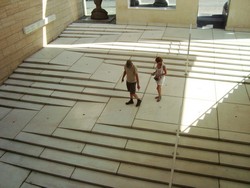Engaging disabled people in improving architectural design
The EU-funded AIDA (Architectural design in dialogue with dis-ability theoretical and methodological exploration of a multi-sensorial design approach in architecture) project aimed at understanding to what extent the vast multi-sensory experiences of disabled people can benefit architectural practices and design overall. Project partners developed state-of-the-art theories and novel research approaches to tap into the experience of both disabled people and designers. They carried out extensive research on the everyday activities and spatial experience of disabled people, and conducted building visits with them. The AIDA team performed several case studies that reconstructed the design process of notable design initiatives where disability played a key role. It interviewed clients, architects and accessibility consultants, and visited various sites with and without disabled people. Researchers chose a real-world competition design to determine situations for including people with sensory impairments to serve as experts in the design team. Professional architects and designers collaborated with blind people to establish how architectural design processes can be improved. Overall, the findings showed that by approaching architecture from a disability perspective, architects and designers will broaden their concept of space itself and understanding of design, leading to innovative solutions. AIDA successfully demonstrated how architecture can benefit from disabled persons’ expertise-by-experience and the broader notion of inclusive design. By involving disabled people, the quality of life of all citizens will improve.



